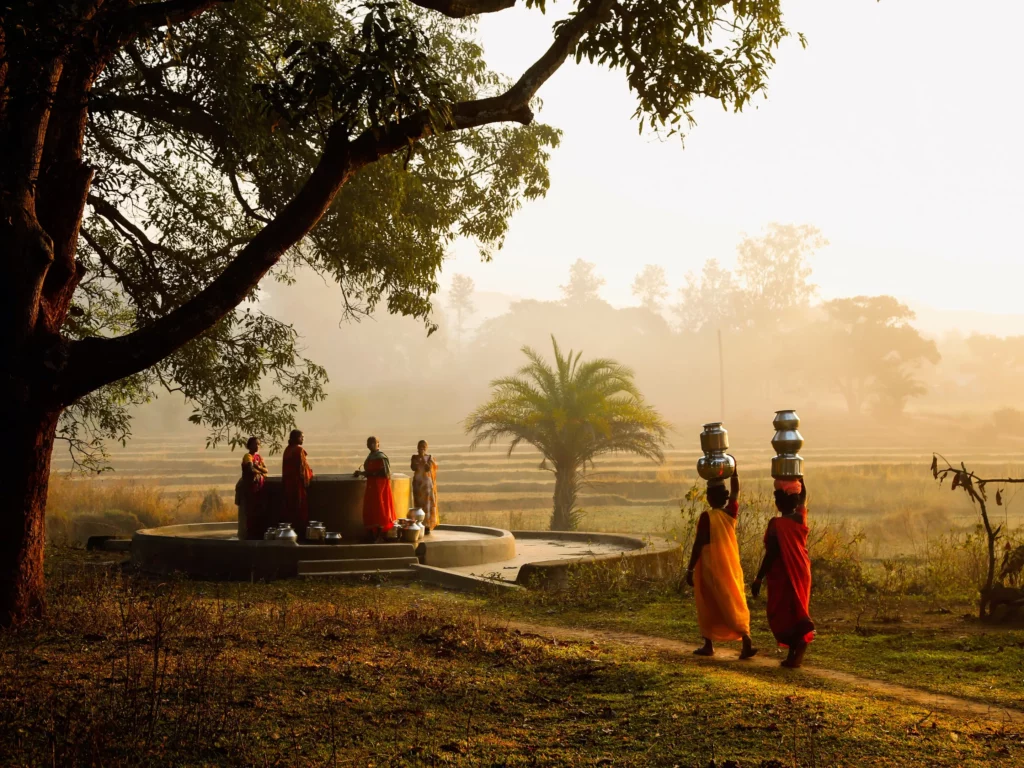Blogs|Blogs
Creating Access to Clean Water in India
“I would wait until nighttime to try … There were so many tired, wide-staring eyes in our slum, and you never knew what was going through the men’s minds when they were looking at you. At times, I could feel their eyes burning into my back. When bedtime came, I would lie next to my mother with my hand around her waist and wait for her to fall asleep.
Even though it was pitch black and I can’t hear well, I could tell when she was deeply asleep because her belly would relax in my hands. Then I would wait for the clattering of our slum to calm, for the thumping of tired feet around our shed to stop, and for the snoring to begin—and my stomach [would start to] churn. I hated leaving my mother.
Stepping as quietly as I could out of our shack, I tiptoed my way towards the forest, just to the west of the slums … The few sounds I could hear made me jump and when I searched the darkness to find their source, all I could see were shadows. There could be dangerous animals or people lying in wait, and there was nothing I could do about it … I was totally at nature’s mercy—helpless.”
This reads like the beginning of a bestselling novel, doesn’t it? Where is our protagonist going; what is she up against? You can tell that she’s scared—terrified really—and that whatever she’s doing is dangerous and possibly life-threatening.
But this story isn’t from a novel and the thing this girl is doing is life-threatening. Our narrator is named Laxmi (listen to the rest of her story here); she’s a teenager from India and in this story, she’s going to the bathroom. Think about your trips to the bathroom: anytime the feeling strikes, you probably walk across your house or office building and simply go. No thought, no fear.
Laxmi’s experience is just one in two billion; over two billion people who struggle with access to safely managed sanitation. For this blog, we’d like to focus on one piece of the puzzle in a specific part of our world: clean water in India.

Dirty Water and No Place to Go: The Clean Water Crisis in India
Bear with us on some stats so that we can set the scene for this issue. UNICEF estimates that less than 50 percent of the population in India has access to safely managed drinking water. When we say safely managed, we mean easily accessible and free of dangerous chemicals and contaminants.
Almost 2 million dwellings receive water that’s being poisoned by arsenic and fluoride, while many women and girls spend an average of 35 minutes a day fetching water. That adds up to 27 missed days of school or work. Waterborne diseases create an annual economic burden of about 600 million US dollars in India.
Without clean water in India, nothing else—not even the most state-of-the-art sanitation system—will work well. Handwashing, for example, is one of the most important ways to prevent the spread of disease but it only works if there’s water available.
The same goes for toilets: they need to be connected to a water supply in order to function properly. In fact, toilets and clean water go hand in hand: you can’t have one without the other.
What’s Poo Got To Do With It?
We started with a story about finding a safe place to go to the bathroom, so we’d like to tie it all together now. You can’t have sanitation without water and you can’t have clean water without sanitation. It’s a bit of a chicken-and-egg situation, but it’s one that we see played out every day in countries like India.
Lack of access to toilets and insufficient hygiene lead to open defecation, which in turn pollutes water sources. This creates a cycle of disease and poverty that’s hard to break. And it’s not just India—globally, 673 million people still practice open defecation.

Open defecation means that people are going to the bathroom in fields, on riverbanks, behind bushes… basically anywhere that isn’t a toilet. This leaves human waste exposed to the environment where it can contaminate food and water sources. People are using water that is almost black in color because of how much sewage is in it.
So, What Have You Got To Do With It?
By building toilets in people’s homes and the infrastructure to go along with them, we can break the cycle of disease and poverty. A toilet doesn’t just mean a clean and private place to go to the bathroom—it means improved hygiene, better health, and more opportunities for everyone.
India is probably thousands of miles and a long plane ride away, but the ZuLoo website is right here. Through our 242 Partner program, you will be a supporter of ZuLoo Humanitarian Outreach (ZHO) and its ongoing efforts to bring clean, safe, and sustainable sanitation (toilets) to those who need them most.
You can reach out to us here or take a look at our social media to get a better idea of what we’re all about and how you can save lives—one toilet at a time.

